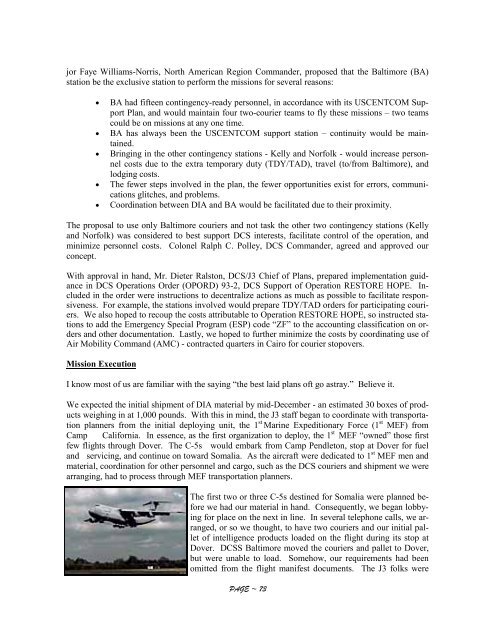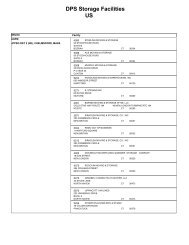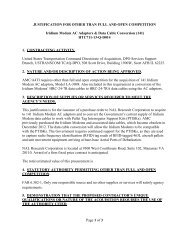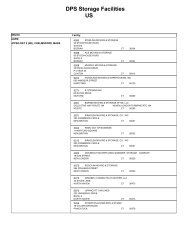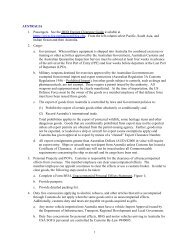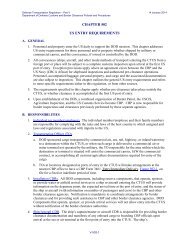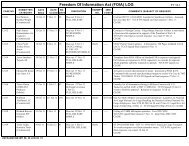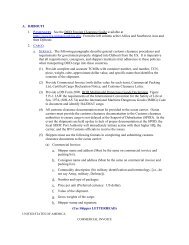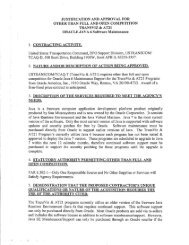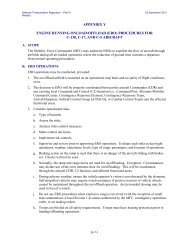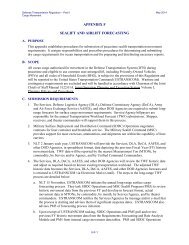HistoryFull.pub - United States Transportation Command
HistoryFull.pub - United States Transportation Command
HistoryFull.pub - United States Transportation Command
Create successful ePaper yourself
Turn your PDF publications into a flip-book with our unique Google optimized e-Paper software.
jor Faye Williams-Norris, North American Region <strong>Command</strong>er, proposed that the Baltimore (BA)station be the exclusive station to perform the missions for several reasons:• BA had fifteen contingency-ready personnel, in accordance with its USCENTCOM SupportPlan, and would maintain four two-courier teams to fly these missions – two teamscould be on missions at any one time.• BA has always been the USCENTCOM support station – continuity would be maintained.• Bringing in the other contingency stations - Kelly and Norfolk - would increase personnelcosts due to the extra temporary duty (TDY/TAD), travel (to/from Baltimore), andlodging costs.• The fewer steps involved in the plan, the fewer opportunities exist for errors, communicationsglitches, and problems.• Coordination between DIA and BA would be facilitated due to their proximity.The proposal to use only Baltimore couriers and not task the other two contingency stations (Kellyand Norfolk) was considered to best support DCS interests, facilitate control of the operation, andminimize personnel costs. Colonel Ralph C. Polley, DCS <strong>Command</strong>er, agreed and approved ourconcept.With approval in hand, Mr. Dieter Ralston, DCS/J3 Chief of Plans, prepared implementation guidancein DCS Operations Order (OPORD) 93-2, DCS Support of Operation RESTORE HOPE. Includedin the order were instructions to decentralize actions as much as possible to facilitate responsiveness.For example, the stations involved would prepare TDY/TAD orders for participating couriers.We also hoped to recoup the costs attributable to Operation RESTORE HOPE, so instructed stationsto add the Emergency Special Program (ESP) code “ZF” to the accounting classification on ordersand other documentation. Lastly, we hoped to further minimize the costs by coordinating use ofAir Mobility <strong>Command</strong> (AMC) - contracted quarters in Cairo for courier stopovers.Mission ExecutionI know most of us are familiar with the saying “the best laid plans oft go astray.” Believe it.We expected the initial shipment of DIA material by mid-December - an estimated 30 boxes of productsweighing in at 1,000 pounds. With this in mind, the J3 staff began to coordinate with transportationplanners from the initial deploying unit, the 1 st Marine Expeditionary Force (1 st MEF) fromCamp California. In essence, as the first organization to deploy, the 1 st MEF “owned” those firstfew flights through Dover. The C-5s would embark from Camp Pendleton, stop at Dover for fueland servicing, and continue on toward Somalia. As the aircraft were dedicated to 1 st MEF men andmaterial, coordination for other personnel and cargo, such as the DCS couriers and shipment we werearranging, had to process through MEF transportation planners.The first two or three C-5s destined for Somalia were planned beforewe had our material in hand. Consequently, we began lobbyingfor place on the next in line. In several telephone calls, we arranged,or so we thought, to have two couriers and our initial palletof intelligence products loaded on the flight during its stop atDover. DCSS Baltimore moved the couriers and pallet to Dover,but were unable to load. Somehow, our requirements had beenomitted from the flight manifest documents. The J3 folks werePAGE ~ 73


